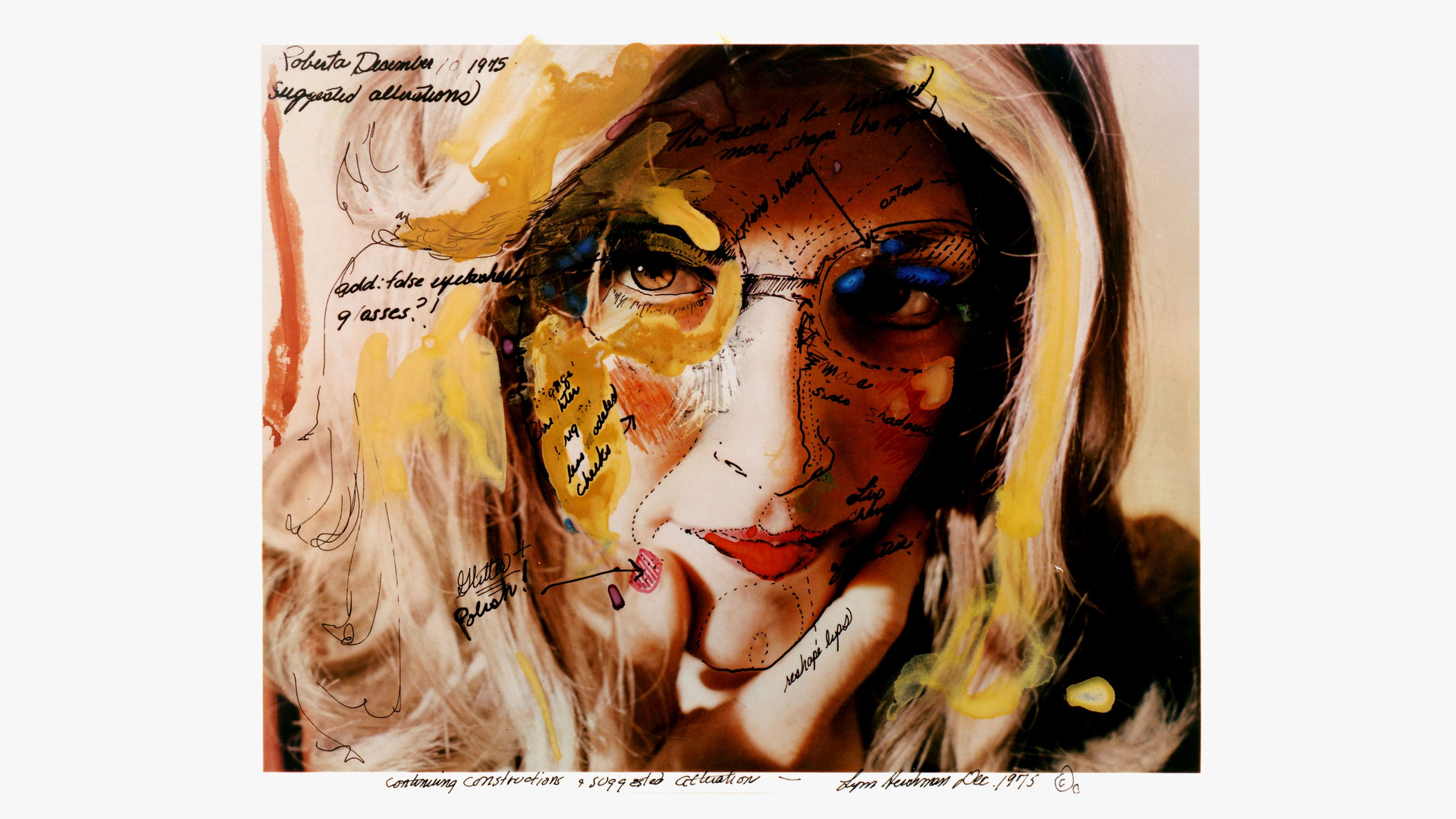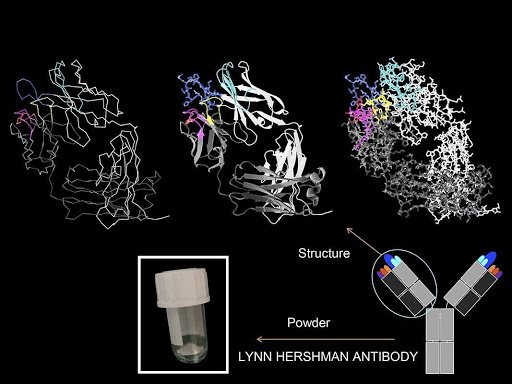Deep Focus
Cultural Mirror: Antibodies, Critics, and Roberta Breitmore

Roberta’s Construction Chart #2, 1975. Photography, digital pigment print. 63.8 × 50 cm. Courtesy of the artist, Bridget Donahue, New York and Anglim Gilbert Gallery, San Francisco. © Lynn Hershman Leeson
In 1998, I wrote: “Imagine a world in which there is a blurring between the soul and the chip, a world in which artificially implanted DNA is genetically bred to create an enlightened and self-replicating intelligent machine, which perhaps uses a human body as a vehicle for mobility.“
An antibody is a blood protein that can identify toxins and then attempt to neutralize or erase them. Besides their widely known roles as molecules involved in developing immunity and in the functioning of vaccines, antibodies have become central tools in biotechnology and biomedicine. The Antibody Project is a concept-driven collaboration that I founded in 2017, with Dr. Thomas Huber, the therapeutic-antibody research-group leader at Novartis Labs. The project resulted in the production of an antibody inspired by leading scientific research. Its findings were displayed in the final version of the art installation, The Infinity Engine (2014–18), a functional replica of a genetics lab, which I created to address the state of DNA manipulation and the impact it has on society. In particular, the findings confront the implications of how bioengineering is altering our concept of identity.

Structure of the Lynn Hershman antibody, visualized using PyMOL and presented as a powder in a glass vial. From the Lynn Hershman Leeson: Anti-Bodies, exhibition at HeK (House of Electronic Arts Basel), 2018. Image courtesy of Novartis and the artist.
Built of modular units, the flexible and scalable environment of the Infinity Engine can be adapted to different locations and reflects current standards in genetic research. In the cubicles, representations and re-enactments of lab tests are on view along with 3D-printed scaffolds of noses and ears, microscopes, and other types of scientific equipment. Color-coding and signage define the installation, which is enhanced with replications of sounds typical of a genetics lab. Wallpaper of hybrid crops and animals show the global reach of gene editing. I worked with eighteen scientists to complete the final eight rooms of the lab, which eventually included transferring the content of the exhibition into DNA.
As part of the installation, the work titled Antibody Room (2014) featured the development of an artificially engineered antibody that bears the name “Lynn Hershman” in its molecular structure. Simultaneously, a second antibody was developed, called “ERTA”, based on my project, Roberta Breitmore, which illuminated the rampant toxins of sexism in the 1970s.

Lynn Hershman Leeson as Roberta Breitmore. Production still from the Art in the Twenty-First Century Season 9 episode, San Francisco Bay Area. © Art21, Inc. 2018.
In 1972, I began a long-term performance as the character Roberta Breitmore. Her first acts were to arrive by bus in San Francisco and to check into the Dante Hotel. Breitmore undertook real-life activities, such as opening a bank account, obtaining credit cards, renting an apartment, seeing a psychiatrist, and becoming involved in trendy occupations at the time, such as joining Weight Watchers. Seeking a roommate, she placed ads in local newspapers, which yielded forty-three responses, and she pursued interactions with twenty-seven of those individuals. She had her signature clothing, makeup, walking style, gestures, speech mannerisms, and handwriting. Her activities were documented in 144 drawings and surveillance photographs, as well as other artifacts, including a driver’s license. During the fourth year of the performance, Breitmore became a multiple personality, with four other people appearing in her guise. The performance ended in 1978 at the Palazzo dei Diamanti in Ferrara, Italy, in an exorcism ritual held over the crypt of Lucrezia Borgia, during which Breitmore was transformed through the elements of fire, water, air, and earth. In the process, I commissioned Spain Rodriguez, a Zap Comix artist, to document the escapades of Roberta Breitmore in a graphic novel. Roberta was a cultural mirror, one who was magnetically drawn to, witnessed, and reflected the world around her. The archive of her existence is constantly being re-performed, as visitors seek to understand the era of her life.

Lynn Hershman Leeson as Roberta Breitmore, 1978. Production still from the Art in the Twenty-First Century Season 9 episode, San Francisco Bay Area. © Art21, Inc. 2018.
Beginning in 1968, I invented three art critics to publish newspaper and magazine articles. Each fictional writer had his or her particular style and philosophy: Gay Abandon was a freelance critic for S.F. Shopping News while Herbert Goode and Prudence Juris wrote for respected art journals like Studio International. Juris even secured a regular column in Artweek. The three critics disagreed with one another and often fought in print. However, they usually favorably mentioned the work of Lynn Hershman Leeson (that is, of me). When I garnered enough press reviews, I was able to convince local galleries to exhibit my work. These published articles later became my master’s thesis, titled “Aesthetic Morphology and Its Application to Art Criticism.” I did not think this approach was dishonest but rather a stealth method for overcoming the enormous prejudice against exhibiting women artists that existed at the time.
I try to live in the present because most people live in the past. If you live in the present, most people think you live in the future because they don’t know what happens in their own time. An antibody is a basic representation of identity: a molecule capable of being reactive against oneself, an inverted biological gesture that has as its goal healing from the inside out, a cyborg-like dream of infiltrating the body itself in an attempt to create a radical and curative recovery. Antibodies identify, expose, and transform toxins. These issues have permeated my work for the past fifty years.
Watch Lynn Hershman Leeson in Art in the Twenty-First Century Season 9 episode, San Francisco Bay Area.
